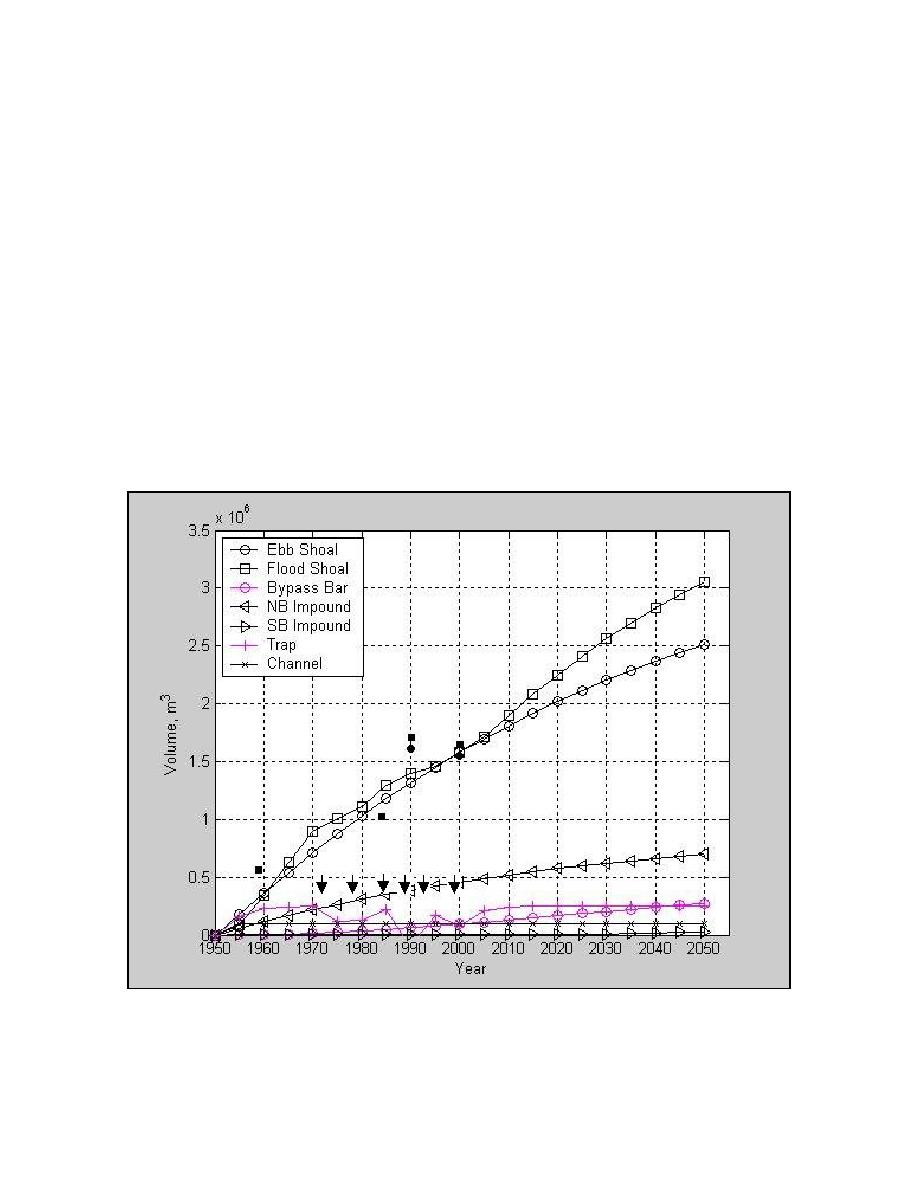
MODELED EVOLUTION OF SEBASTIAN INLET 1950 2050.
Under the assumption that the ebb and flood shoal systems of Sebastian Inlet are still evolving,
but that they may be approaching an equilibrium volume, the Reservoir Model was run to simulated
inlet evolution between 1950 and 2050 (Fig. 10). Based on model calibration it was assumed that
the equilibrium volume of the ebb shoal is 3 m3 million and that of the flood shoal is 4.5 million m3.
The pathways distributing sediment volume around the inlet are as defined in Figure 9. Volume
loss to the offshore (O in Fig. 9) was considered minimal, and the coupling coefficient defining
sediment exchange from the inlet channel (C in Fig. 8) was set to simulate flood-dominate transport
of sand in accordance with the calculated inlet hydraulics (Zarillo and Surak 1995).
The gross annual longshore drift of sand in the vicinity of Sebastian Inlet was estimated at
approximately 175,000 m3 (Coastal Technology Corp. 1989). Partitioning of gross longshore drift
was from the analysis of longshore wave power using the nearshore directional wave measurements
(Fig. 5). Accordingly the annual drift directed to the south is estimated at approximately
125,000 m3, whereas the annual drift to the north was estimated at 50,000 m3. These values yield a
net annual drift to the south of 75,000 m3. Figure 10 shows the results of the model simulation and
compares measured and estimated shoal volumes with predicted volumes for 1958, 1984, 1989 and
1999.
Fig. 10. Reservoir Model simulation of sediment volumes at Sebastian Inlet, 1950 to 2050.
Solid symbols indicate shoal volumes estimated from topographic data and analysis of aerial
images. Solid arrows indicate sand bypass events.
12
Zarillo et al.



 Previous Page
Previous Page
